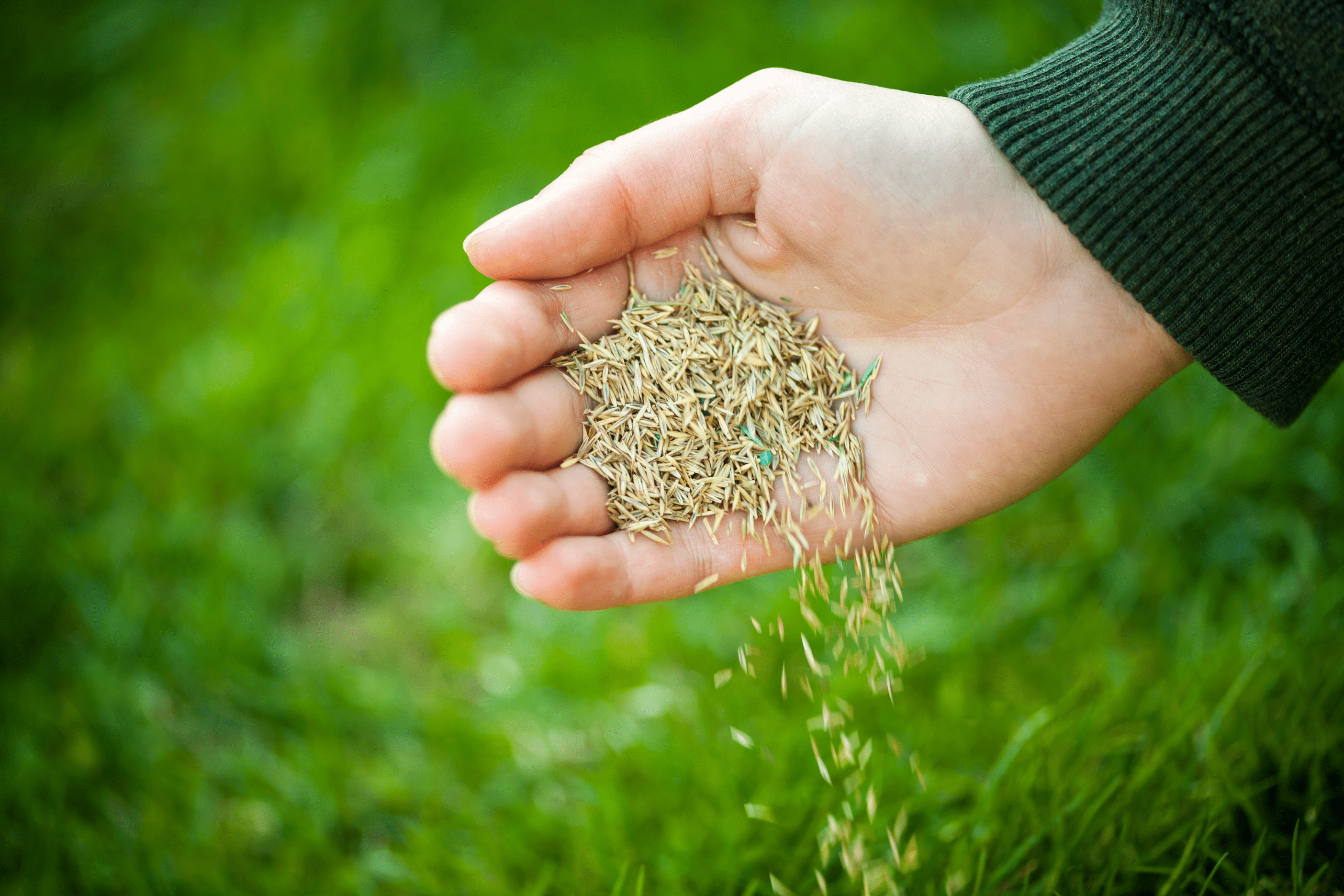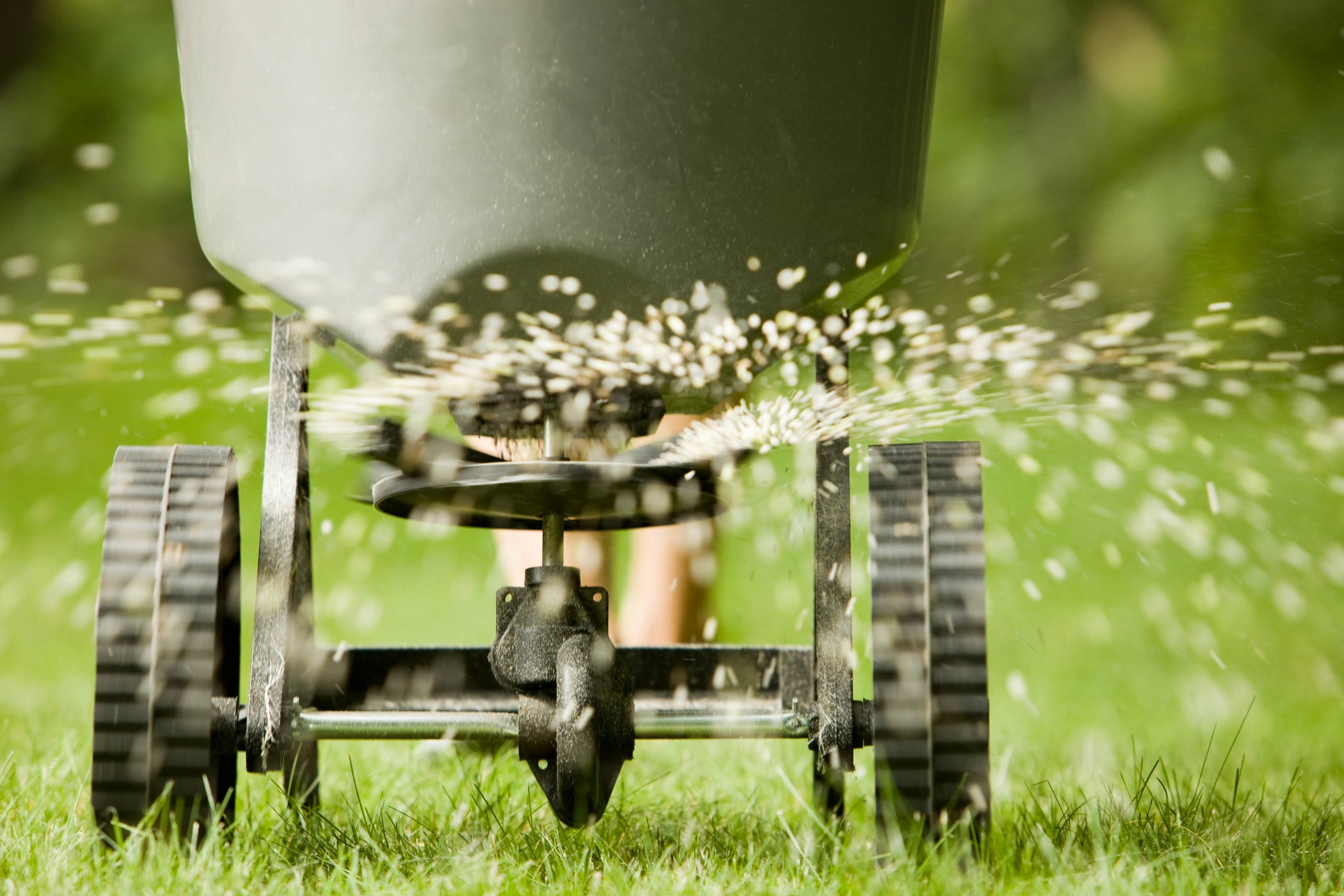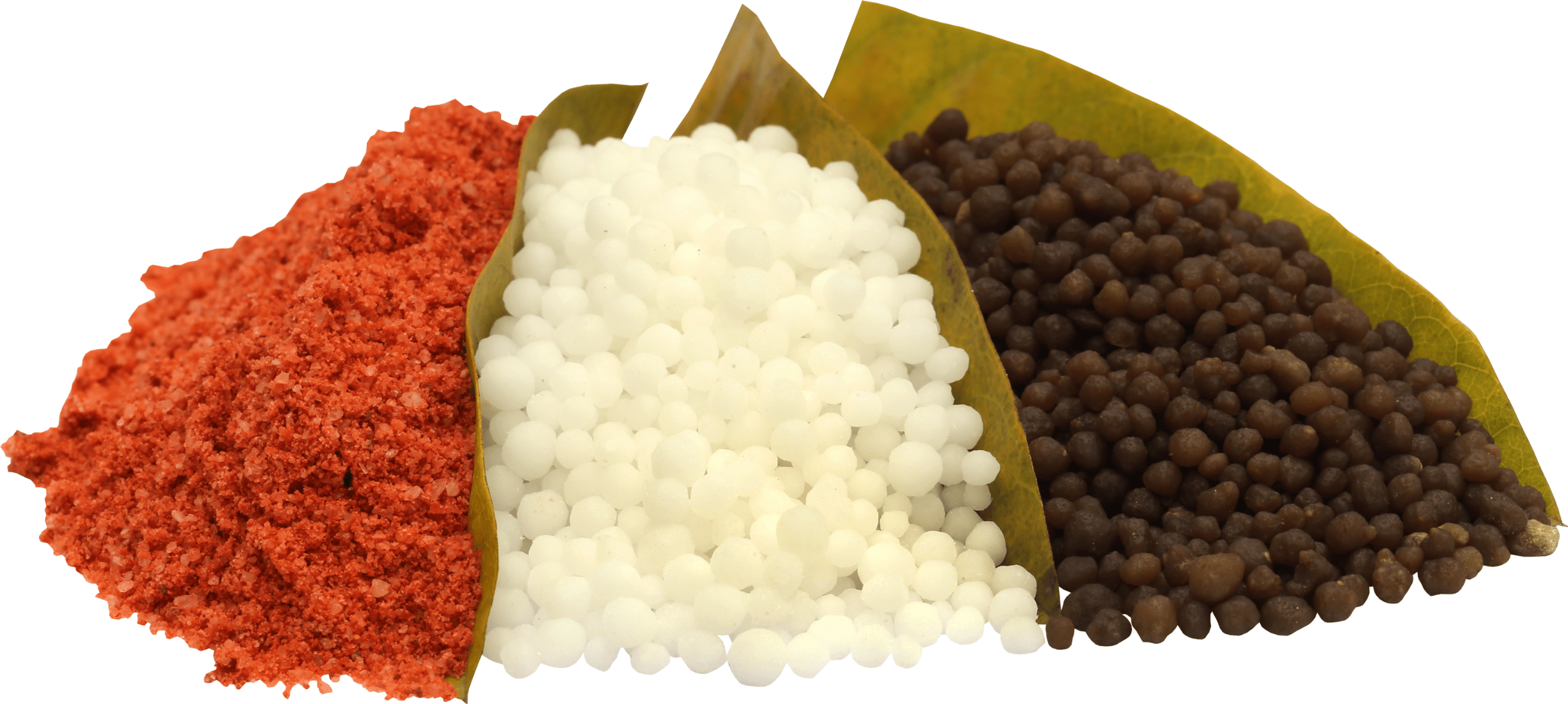Overseeding and Fertilizing Made Easy!
It’s time to whip that lawn back into health!
(function(d){
var f = d.getElementsByTagName(‘SCRIPT’)[0], p = d.createElement(‘SCRIPT’);
p.type = ‘text/javascript’;
p.async = true;
p.src = ‘//assets.pinterest.com/js/pinit.js’;
p.setAttribute(‘data-pin-hover’, true);
f.parentNode.insertBefore(p, f);
}(document));
function openWin() {
myWindow = window.open(“http://www.youtube.com/channel/UCHGLUxlObWaCOcDTYiuZFPA?sub_confirmation=1”, “0, 0”, “width=575, height=325”); // Opens a new window
AnalyticsTrackEvent(‘Social’, ‘Subscribe’, ‘YouTube’);
}
When should I fertilize my lawn? Do I overseed or fertilize first? Should I overseed after aeration? We here at Fix.com want to help answer those questions for you,
because the art of fertilizing and overseeding is not as convoluted as one might think! After a long, cold winter, your lawn needs your help to get back to its glory days
of summers past – which is a lot easier than you might think it is. It’s important that you read our previous blog article
on dethatching and aerating your lawn before proceeding with this guide, just simply because it’ll make your landscape (however giant or petite) that much healthier!
Do I overseed or fertilize first?
A commonly asked question for new homeowners and soon-to-be lawn-care experts! While both are extremely important to your lawn’s overall health in their own ways, the answer is: it depends. I know you’re probably
shrugging a little bit at that answer, but it’s true. Depending on the state of your lawn now, you may not need to overseed at all, or fertilize much, either! But, you probably should. Generally speaking, you probably
should overseed first – that way the new grass seeds have time to grow initially before you feed them. But there is no specific set of instructions for which order to do it in, because every lawn is different!
Overseeding

First, we start with the grass seed itself, a task that doesn’t always necessarily have to get done but is equally as important for some lawn owners. Overseeding is essentially just applying a new coat of seed to a lawn.
This allows for the patches of dead grass and weeds to flourish as new grass blades, or to strengthen the growth of pre-existing grass. It’s important that you overseed during the summer so that your grass is given the
best opportunity with such a large amount of sunlight available.
How do I overseed?
Overseeding by itself is not inherently difficult, but you should cross some preliminary items off the list first, beginning with: Mow and rake the lawn. Get those old
blades cut short so that the seeds can get to the soil easily, and then rake any rocks, sticks or other small stuff out of the
grass as well.
Amending? What is that?
Next item is amending the soil, which differs from fertilizing because it caters more to the type of grass being grown. For instance, you’d want to steer more towards one type of amendment soil if you’re trying
to grow a flower garden versus a vegetable garden because these amendments are usually made up of clay, sand, and other materials that might benefit one organism tremendously and detriment another. If you’re stuck on
what type of amendment soil you might need, perform a pH-level test on it to find out the elemental makeup of your soil. But amending isn’t always necessary for every lawn – if your grass isn’t growing or if you know what
specific purpose the grass will be used for, then amendment could be useful!
After that you’ll want to dispense the grass seed over your lawn, making sure to cover as much of the lawn as possible and doing it evenly in a back and forth, zig-zag formation. After that’s done, it’s as easy as watering
the soil and waiting a few weeks before fertilizing, or doing it then and there!
What is fertilizing?

While this may all come off as this niche, hobbyist way of approaching lawn care at first – it’s actually quite simple. Fertilizing is done as a way of nourishing your lawn, the same way we feed our bodies when we’re hungry.
Normally, it’s best practice to aerate your lawn to make sure that your lawn can completely absorb the grass seeds you spread and then fertilize them after the grass has had time to grow. Check out this Fix.com blog article to find out more on
how to aerate your lawn!
Our lawns spend all summer soaking up the sun, rain, and other nutrients nature throws their way, only to harden up and freeze over the winter. As they come back into the warmer months, they need their nutrients again to grow
and thrive, which is why fertilizing is so vital!
In practice, it’s as simple as making sure you have the right fertilizer for your lawn. This can be done by using a soil checker or pH test as I mentioned earlier, and since fertilizers in essence are composed of 3 main
ingredients – Nitrogen, Phosphorus, and Potassium – you can figure out exactly what your lawn is deprived of. If your lawn tests neutrally, it likely means your lawn doesn’t need any extra nutrients.

But don’t forget, these elements are essential to the overall health and growth of your grass. Depending on what you plan to do with your lawn, or grow on it, it’s important to figure out what percentage of those elements
you would need. You can find this information from a local land authority or by consulting a guide.
What do I need to know when fertilizing?
During the summer months, it’s best to fertilize your lawn with a healthy amount of nitrogen, which is the first number in the elemental set. This nitrogen will not only protect your lawn further in the summer, but it’ll allow
your lawn to rebuild and become stronger. But it’s important, that while you can fertilize during the summer, do not fertilize during the hottest points of the summer because without sufficient water, grass will burn and
further damage the lawn.
And what’s just as important to remember about what you’re feeding your lawn, is how often you feed it. When it comes to synthetic versus natural fertilizer, it’s important to realize the differences so you can
choose which one is best for your grass. Synthetic nutrients are much more soluble, meaning that they react faster and can get into your lawn faster than normal fertilizer – which can be important if you need
the nutrients in your grass immediately. Organic nutrients take longer to be absorbed, but are less prone to being overfed (which by the way, you should watch out for with a synthetic fertilizer!).
As mentioned in our video on fertilizing and overseeding, dispensing the fertilizer onto your lawn can be done with a hand spreader or with a rotary
broadcaster – either of which will be fine. It’s important that you follow a zig-zag pattern, so you not only cover the entire area of where your lawn exists, but also so that it receives an even spread.
Now that you’re equipped with the necessary know-how to easily and effectively overseed and fertilize your lawn – get to it! Your lawn is your oyster, or something like that!
(function(d){
var f = d.getElementsByTagName(‘SCRIPT’)[0], p = d.createElement(‘SCRIPT’);
p.type = ‘text/javascript’;
p.async = true;
p.src = ‘//assets.pinterest.com/js/pinit.js’;
p.setAttribute(‘data-pin-hover’, true);
f.parentNode.insertBefore(p, f);
}(document));
function openWin() {
myWindow = window.open(“http://www.youtube.com/channel/UCHGLUxlObWaCOcDTYiuZFPA?sub_confirmation=1”, “0, 0”, “width=575, height=325”); // Opens a new window
AnalyticsTrackEvent(‘Social’, ‘Subscribe’, ‘YouTube’);
}